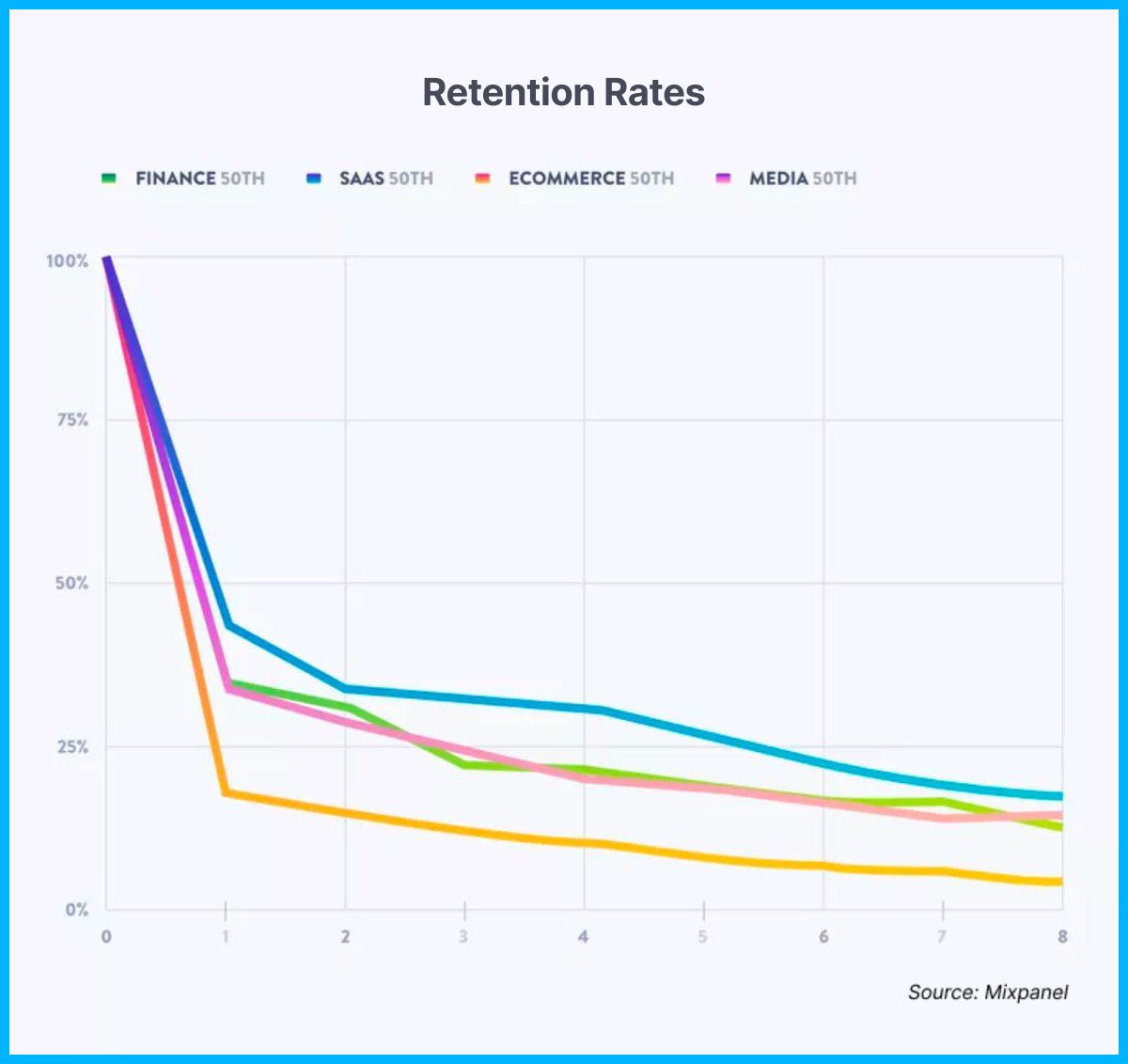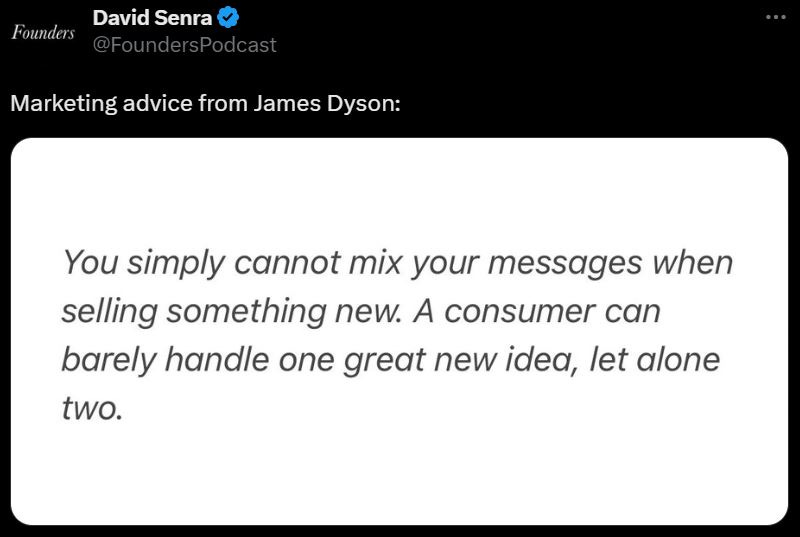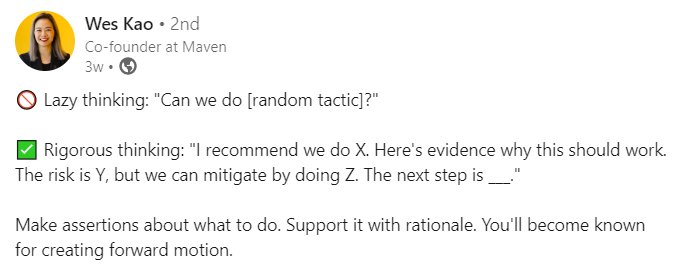The Inbound Newsletter #4 - Product Managers are the mortars in a brick wall.
Today we are featuring content about Product. Must-have skills for Product Managers, clarity on your messages, customer retention and more.
🙏 Thanks to Ravi Mehta, Jonathan Becher, James Dyson, Wes Kao and a few more.
Blogs / Articles - The Inbound Newsletter (TIN)
⚙️ From good to peak-performing: 12 skills every product manager needs - Ravi Mehta (Reforge, BCG Consulting, Tinder, TripAdvisor) opened his writing with “You are like the mortar in a brick wall“. The better your work, the stronger the wall. Here a few important skills for PMs.
TL;DR:
The best PMs are both creative innovators and rigorous optimizers.
The best PMs don’t just deliver features, they deliver real business impact.
There are 12 main skills that can be put together into 4 main categories:
Customer Insight - Fluency with Data, Voice of the customer, User Experience Design.
Influencing People - Managing Up, Team Leadership, Stakeholder Management.
Product Strategy - Strategic Impact, Product Vision & Roadmapping, Business Outcome Ownership.
Product Execution - Feature Specification, Product Delivery, Quality Assurance.
A good PM is someone that works with data (listens), communicates well (to stakeholders), is a good strategist (decides fast) and executes perfectly.
Let’s get practical
Are you a PM? Test the performance on each of the skills. Get better at those in which you are underperforming.
Need to hire a PM? Don’t think on each skill, but on the four main areas. Standarize the questions and the process. Avoid performative questions.
-
⚙️ Lenny Rachitsky helps executives build a strategy (from top to bottom) - Lenny (AirBnB, Lennys Podcast & Newsletter) shared the process of helping companies create a solid strategy. All starts with a mission and a vision. Template included.
TL;DR:
Steps to build a Strategy
Start with a Mission (what you’re trying to accomplish now) and a Vision (what the world looks like once you’ve accomplished it).
Don't just write them down, you'll have to start living them out. Try to bring them in conversations, in examples or documentation.
The bigger the company, the more importance they get. They align everything.
You’ll need to set your team’s guiding goal. Do you know your North Star Metric?
Start prioritizing the what and why of the situation and then put everything into a simple framework: Situation, Complication, and Resolution.
Finally pillars. They each act as a mini project brief. You need to focus in a few of them (3-5) in order to keep it strategic and not operative.
Do you work with OKRs? Great, connect them with your pillars and track progress.
This is a strategy aligned from top to bottom. In the article you’ll find examples and more details. Here you have the template from Lenny Rachitsky.
More resources: Tesla’s MasterPlan, part Deux from Elon Musk (CEO). GitLab three-year strategy from Sid Sijbrandij (CEO).
-
⚙️ Survivorship bias and taking better decisions - Not about the likelihood airplanes would be shot down (have you seen the image?) but about understanding the concept and trying to find ‘the missing data’ in order to take better decisions. Jonathan Becher (San Jose Sharks, Khoros, SAP) is the author.
Key Takeaways:
Concept: It happens when we base our understanding only on the experiences of those who succeed or are highlighted in some way, and do not take into account others who failed or are not visible.
Examples: Movie stars, athletes, and CEOs who dropped out of school and became successful. Perhaps we only see the successful 1%. We don’t see the other 99% which are not successful.
Now the real key: You have to actively try to find the missing piece of information. E.g. many companies analyze LOST deals (which are more than the WON deals) just to understand what is happenning. Like in Taleb’s Silent Evidence.
It’s very tempting to only watch at your wins (“rinse and repeat, get more wins”) but it’s also very important to keep an eye on your losses. Especially if the missing information is crucial or is potentially a bigger road block for your company.
-
Social - The Inbound Newsletter (TIN)
💻 Did you know that the first week for your product is critical? - At the end of the first week you are going to lose a HUGE number of clients. This not-that-recent research shows that between 55 and 65% for SaaS. Numbers may vary, but the idea remains the same.
Disclouse:
Not stated whether this includes trials/freemiums or not (probably it does).
2019 report. Many things changed in the industry in 4 years.
2022 was hard because of layoffs and retention went down. 2023 is going to be harder. Source.
Key Takeaways:
In the first week you are going to lose lots of clients (60-70% depending on industry). In the first two months MORE of that (up to 90%).
Companies that are great at retention, grow at least 1.5x-3x faster.
There’s a huge change of getting better at product marketing. Users don’t understand your products nor your solutions. They churn because it’s not what they needed at first place. It should be done better to help customers know they are your ideal ICP (Ideal Customer Profile).
If they won’t stick with your product because they did not need your product, you never really had them.
-
💻 A Marketing advice from James Dyson: Sell one idea at a time - James Dyson, inventor, industrial designer and businessman. Thanks to David Senra from Founders Podcast.
Key Takeaways:
This can be applied to everything. Sell one idea at a time. To your boss, to your clients, to everyone. Be clear, be concise.
-
💻 Rigorous thinking is key. Be precise and assertive in your statements - This is hard, but this precision will help you and your team A LOT. In comments there are other great ideas and suggestions.
Key takeways:
Be precise, always. Precise on what you know and precise in what you don’t know. Let others dedice with that information.
Don't make “comments and float ideas” - Make statements and back them with real thinking.
In the long run, you’ll be known for that and your conversations will be much easier. People will trust you more.
Don’t give others homework. You do the hard work and you’ll be thank for that.
Being precise will help you have a more in-depth insight on the situation. You’ll be able to remove fluff from the message and be straighforward.
-
Visual - The Inbound Newsletter (TIN)
☁️ Gain clarity through DOING, not just thinking. This is perfect for Product.
So that would be all for today. Thanks for reading. I’ll leave you with a quick NPS poll. Because what is not measured, cannot be improved.





